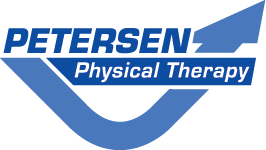In the past, we’ve written entire articles on physical therapy vs pain medications, and what we’ve got to say about opioids vs physical therapy isn’t too terribly different. For a deeper dive on that particular topic, please refer to that article.
In this article, we’re going to specifically discuss physical therapy vs. opioids, and why physical therapy is often the better choice for managing pain, healing injuries, and improving quality of life:
The choice between physical therapy and opioids depends on the patient’s needs and type of pain. Physical therapy focuses on treating the root cause of pain, improving function, and offering long-term solutions. Opioids are better suited for short-term, severe pain relief but carry risks of dependency and side effects.
Benefits of physical therapy as opposed to opioids
Opioids are effective for managing acute or severe pain, particularly in the short term. They can provide rapid relief, which is essential in situations like post-surgical recovery or trauma care. However, opioids are not designed to treat the underlying causes of chronic pain, which is where physical therapy may have an advantage.
Physical therapy focuses on improving physical function, mobility, and strength while addressing the root cause of musculoskeletal pain. Its benefits include:
Sustainable pain management
Physical therapy targets the source of pain, whether it’s a misalignment, muscle weakness, or joint stiffness. By addressing these issues, its end goal is to lead to long-term improvement.
Far lower risk profile
Opioids carry risks of side effects, tolerance, and dependency (see our full article on how physical therapy can help solve the opioid epidemic). Physical therapy, while requiring effort and time, avoids the potential complications of long-term opioid use.
Restored function
Beyond pain relief, physical therapy helps patients regain mobility, strength, and confidence in their physical abilities, improving their quality of life.
What’s the catch?
While all of the above may sound like a case for physical therapy, we’d be remiss if we didn’t mention that physical therapy has some downsides and physical therapy isn’t always the best fit for every patient.
Physical therapy, by its very nature, doesn’t provide immediate long-term pain relief. Though patients tend to report that they feel “good” after their first few early physical therapy appointments, real progress tends to take a few weeks, and sustainable progress can take a few months or more.
This is the catch – physical therapy provides a more complete path to long-term pain relief, but it requires a higher time and effort commitment on the part of the patient. It also requires a commitment to be in communication with a physical therapist about progress, so we can make necessary adjustments to your treatment plan as we go.
Armed with this knowledge, we must admit that medications, especially opioids, have their place in reducing pain over the short-term.
Comparing physical therapy costs with opioids
One of the primary selling points of physical therapy is that physical therapy doesn’t cost as much as many other treatment approaches over the long haul.
Cost is a common consideration in pain management, and the perceived affordability of opioids often leads individuals to choose medication over therapy. However, when evaluating long-term costs, the picture becomes more nuanced:
Opioid medication costs
Opioids are relatively inexpensive upfront, especially for short-term use. However, there is more to the cost of opioids than meets the eye.
If the patient does not truly solve their problem (aka, they don’t have an issue that will resolve on its own), they can come out of their opioid prescription with a similar level of pain that they started with. Additionally, patients who aren’t actively working to strengthen affected areas are significantly more prone to re-injury.
This may require further prescriptions down the road, and at worst, may require a patient to participate in a surgery that may have been avoidable in the first place.
Then, once it’s all said and done, the patient may still need to utilize a more holistic approach, like physical therapy, afterward.
Physical therapy costs
While physical therapy may require a higher initial investment, it often reduces the need for ongoing care by addressing the underlying cause of pain. Additionally, every physical therapy patient leaves with a distinct home exercise plan after finishing physical therapy, meaning the patient is empowered to remain healthy and functional for as long as they are willing to continue to maintain, complete their exercises, and stay in touch!
From an economic standpoint, the right choice depends on individual circumstances, including the severity of pain, the condition being treated, and whether the goal is short-term relief or long-term recovery.
When do opioids make sense?
For individuals in severe pain, or who require immediate relief for one reason or another, a short-term prescription for opioids, under the guidance of a healthcare professional, starts making a lot of sense.
While we would argue that physical therapy works very well for most patients who give it an earnest try, we also readily admit that sometimes the pain is simply too great to achieve the desired result right away.
Opioids can make sense for patients who:
- Can’t sleep due to the severity of their pain
- Suffer from pain so great that they cannot perform their daily tasks
- Have pain that prevents them from actually completing a basic exercise program that would help them recover
In these cases, avoiding a primary care physician’s direction to utilize a short-term opioid prescription would likely be detrimental to their recovery.
Trying physical therapy first
For many conditions, physical therapy is recommended as an initial treatment option, particularly for musculoskeletal issues like back pain, joint pain, or recovery from injury.
Physical therapy is non-invasive by its nature, helps many patients avoid higher costs down the road, emphasizes holistic healing over the long haul.
For this reason, we typically recommend that patients try physical therapy first, before other treatment approaches.

















